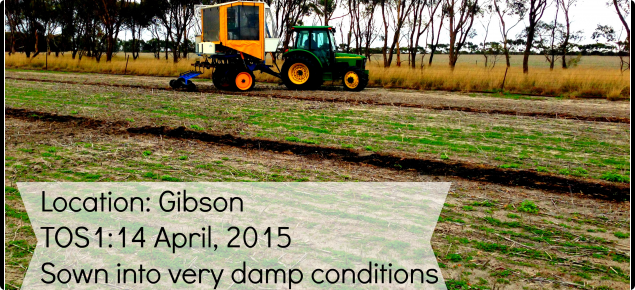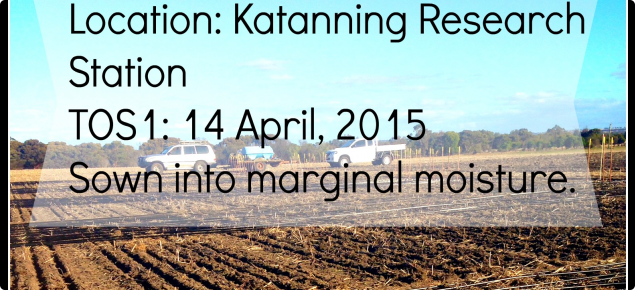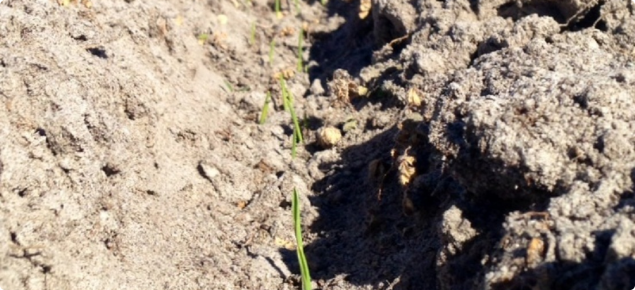The Department of Agriculture and Food Western Australia's (DAFWA) wheat and barley projects (supported by Grains Research and Development Corporation) have trials at Dandaragan, Katanning and Esperance.
Aim
There is a lack of knowledge on the performance of barley varieties and mid-long season wheat varieties when sown in April. This research trial series aims to determine how sowing in mid-April, late April and mid-May affects the performance of;
- New long season malting barley varieties relative to short season barley varieties
- Mid-long season wheat varieties relative to short-mid season wheat varieties
Trial details
Trials have been initiated at Dandaragan (lead researcher - Christine Zaicou-Kunesch), Katanning (lead researcher - Brenda Shackley) and Esperance (lead researcher - Jeremy Curry). Twenty-four varieties (12 wheat and 12 barley) have been sown at three sowing times. A subset of varieties were sown and irrigated at Katanning and Dandaragan to ensure even emergence with the April sowings. This was not required at Esperance.
| Time of Sowing (TOS) | Date |
|---|---|
| TOS 1 | Mid-April : 15 or 16 April |
| TOS 2 | Late April: 29 or 30 April |
| TOS 3 |
Mid-May: 27 or 28 May |
Variety details
| Variety | Grade | Maturity |
|---|---|---|
| Bremer | AH | Mid |
| Calingiri | ASWN | Mid-long |
| Harper | APW | Mid-long |
| Mace | AH | Short-mid |
| Magenta | APW | Mid-long |
| Scout | APW | Mid |
| Trojan | APW | Mid-long |
| Whistler | AGP | Long |
| Yitpi | AH |
Mid-long |
| Zen | ASWN |
Mid-long |
| LPB11-1728 | - |
Mid-long |
| RAC2069 | - |
Mid-long |
| Variety | Grade | Maturity |
|---|---|---|
| Bass | Malt | Medium |
| Baudin |
Malt |
Medium |
| Compass |
Malt? (Should be accredited by 2017) |
Early |
| Flinders |
Malt |
Medium |
| Granger |
Malt |
Medium |
| IGB1302 | Feed | Early |
| La Trobe |
Malt |
Early |
| Lockyer | Feed | Medium |
| Maltstar |
Malt? (should be accredited by 2018) |
Medium |
| Oxford | Feed | Late |
| Scope Cl | Malt | Medium |
| Urambie | Feed | Very late |
Trial background
The most widely grown late maturing wheat variety is currently the lower yielding, rust and yellow spot susceptible Yitpi. There are very few alternatives with breeding companies releasing predominantly earlier maturing lines. Late maturing varieties are important in the cropping systems in Western Australia for managing frost risk and taking advantage of early sowing opportunities. The National Variety Trials (NVT) system is geared towards the evaluation of earlier maturing lines. This trial work will evaluate late maturing lines from the breeding companies in trials designed to maximise their yield potential.
Acknowledgements
Financial support for this research is provided by Grains Research and Development Corporation. The research delivers to the grains industry's development through the Tactical wheat agronomy project (DAW00249) and Barley agronomy project (DAW00224).




